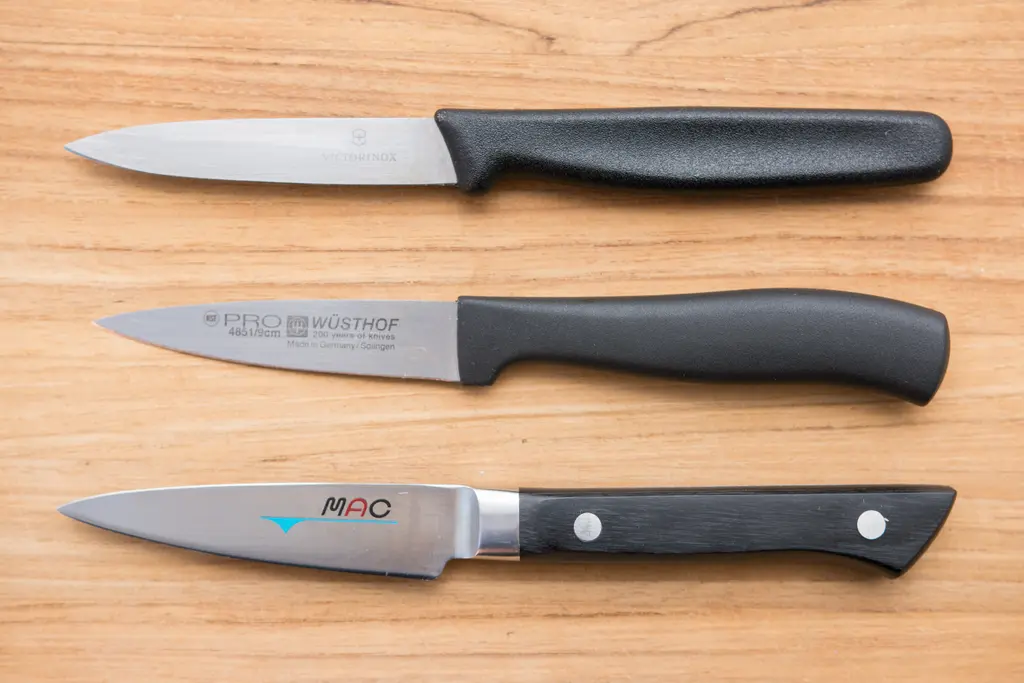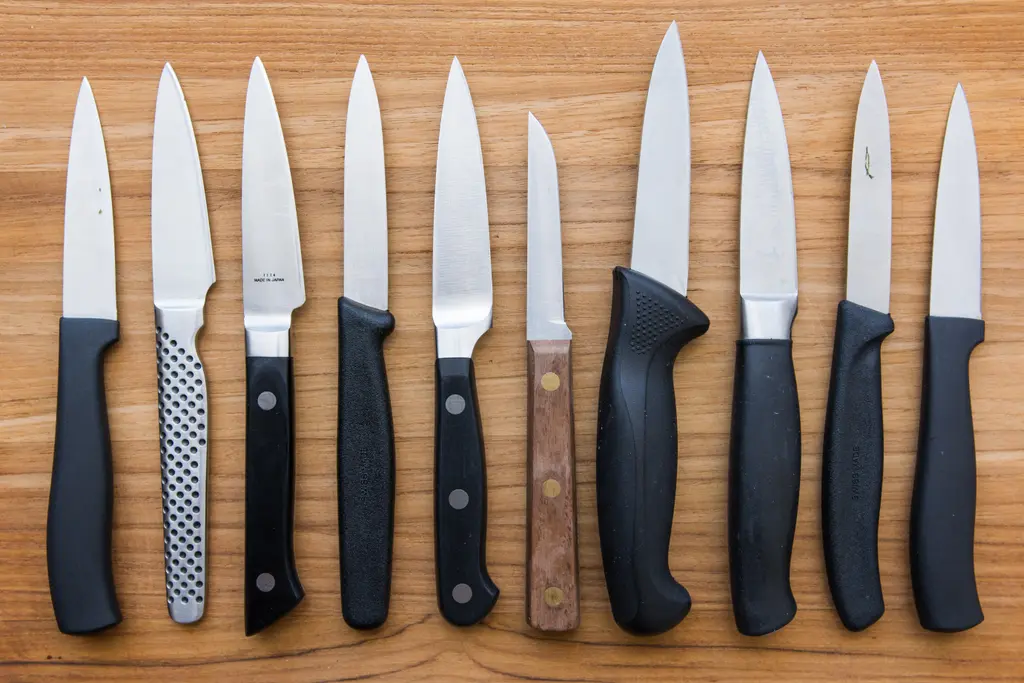Last updated on January 17th, 2024 at 05:43 am
Many kitchen knives are specialised. A cook’s paring knife is multifunctional and useful. This article discusses a paring knife’s purpose, attributes, and why every cook needs one.
What Is a Paring Knife?

Paring knives:
Kitchens utilise small, sharp-bladed paring knives for many purposes. Every cook needs it. The name “paring” alludes to peeling fruits and vegetables, one of this knife’s main uses.
Paring knives feature narrow 2.5–4-inch blades. Pointed blades are easy to manipulate. The ergonomic handle makes delicate cutting tasks easy.
Paring knives have several uses. Trimming, shaping, and precise work are excellent for its small size and sharpness. A paring knife is used to remove potato eyes, devein prawns and make ornamental garnishes.
Paring knives are versatile and handy for other kitchen tasks. It slices strawberries and grapes precisely. It can also be used to score dough or cut meat for even cooking.
Paring knives are tiny, sharp, and pointed. It peels, trims, shapes, and cuts delicate kitchen items. Professional and household cooks need it for its variety and precision.
The Purpose of a Paring Knife

Trimming and Peeling
A paring knife peels and trims fruits and vegetables. The sharp, narrow blade makes peeling produce easy and precise. A paring knife is used to peel apples, carrots and prawns. Its compact size allows precise work and minimises waste.
Exact Work
Paring knives do more than peel and trim. For intricate cutting, it’s precise and nimble. A paring knife’s thin tip and sharp blade allow for delicate operations like garnishing and citrus segmentation. When making delicate cuts or removing produce flaws, it is essential.
Seed and Core Removal
Certain fruits and vegetables require seed and core removal. Easily remove these undesired parts with a paring knife’s pointed tip and keen edge. A paring knife allows for precise apple coring and jalapeño seed removal. Its compact size makes seed and core removal effective in restricted spaces.
Making Zest
Citrus zest enhances many foods. The zest, the fruit’s coloured outer peel, can be delicately removed with a paring knife without touching the bitter pith. Recipes taste better with zest’s sharpness and scent. A paring knife’s sharp blade lets you grate zest into sauces or decorate sweets with thin strips.
Details and Finishing
Presentation matters in cooking. A paring knife is essential for fine-tuning your dishes. A paring knife can score a loaf of bread, cut meat evenly, or cut fruits and vegetables into attractive shapes.
Paring Knife FAQs
Paring knife care: how?
Care for your paring knife to prolong its life. After usage, wash and dry the knife. Soaking or washing it can dull the blade or damage the handle.
Knife blocks and sheaths protect the blade and avoid mishaps. Maintain blade sharpness with an honing steel or sharpening stone.
Is a paring knife versatile?
A paring knife excels at its main responsibilities but can also be used for other kitchen activities. It can hull strawberries, peel potatoes and devein prawns.
It slices grapes and cherry tomatoes precisely. However, a paring knife is not meant for slicing bones or difficult vegetables.
Which paring knives are available?
Different paring knives suit different duties and tastes. Common types:
Straight-edge paring knife: The most common paring knife. Its straight cutting edge allows for precision slicing and peeling.
A serrated paring knife has a scalloped edge. It cuts through tough-skinned tomatoes and citrus fruits without crushing them.
Bird’s Beak Paring Knife: This knife features a beak-shaped blade. It’s utilised for detailed garnishing and shaping.
Can professionals and home cooks use paring knives?
Absolutely! Chefs and home cooks utilise paring knives. Any kitchen needs them for their precision and adaptability. A paring knife may help you with everything from basic meal preparation to exquisite detailing, whether you’re a pro or a beginner.
Conclusion
In conclusion, a paring knife has several uses. This versatile tool is a culinary buddy for peeling, trimming, precision work, seed and core removal, zest generation, and finishing touches.
Whether you’re a professional chef or a home cook, a paring knife improves your culinary experience and precision. A well-maintained paring knife will accompany you on all your culinary excursions.
